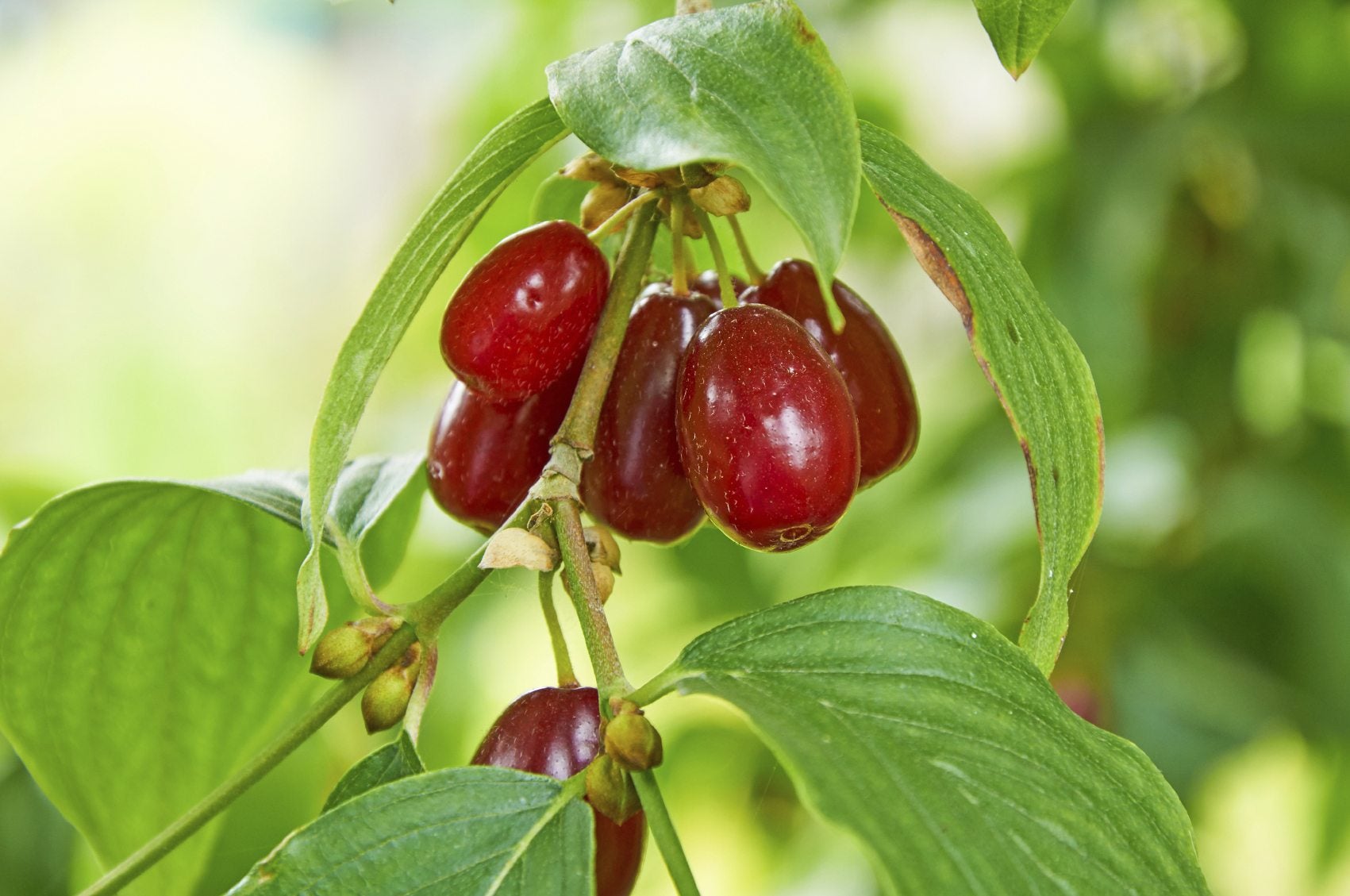Cornelian Cherry Cultivation – How To Grow Cornelian Cherry Trees

At maturity, it looks a bit like an elongated, bright red cherry and, in fact, its name references cherries, but it isn’t related to them at all. No, this isn’t a riddle. I’m talking about growing cornelian cherries. You may not be familiar with cornelian cherry cultivation and wonder what the heck is a cornelian cherry plant? Keep reading to find out how to grow cornelian cherry trees, uses for cornelian cherries, and other interesting facts about the plant.
What is a Cornelian Cherry Plant?
Cornelian cherries (Cornus mas) are actually members of the dogwood family and native to areas of eastern Europe and western Asia (they even survive in Siberia!). They are shrub-like trees that can grow up to 15 to 25 feet (4.5-8 m.) in height if left unpruned. The plant can live and be fruitful for up to 100 years. They bloom early in the season, even prior to forsythia, and bloom for an extended period of time, carpeting the tree in a yellow haze of tiny blossoms. The bark of the tree is flaky, grayish brown to brown. Bright green glossy leaves turn purplish red in the fall.
Are Cornelian Cherries Edible?
Yes, cornelian cherries are very edible. Although the plant is known primarily as an ornamental in the United States, ancient Greeks have been growing cornelian cherries for 7,000 years! The ensuing fruit is initially very tart and looks much like olives. In fact, the ancient Greeks pickled the fruit much like olives. There is actually a myriad of other uses for cornelian cherries such as for syrups, jellies, jams, pies, and other baked goods. Russians even make it into a cornelian cherry wine or add it to vodka.
How to Grow Cornelian Cherry Trees
While historically significant, cornelian cherries have not been mass produced due to the elongated pit inside the fruit that is difficult to remove, as it is firmly entrenched in the pulp. More often, the trees are seen as ornamental specimens, popular and planted around the 1920s. Cornelian cherry cultivation is suited to USDA zones 4 through 8. The trees do best in full sun to part shade and while they do well in a variety of soils, they prefer fertile, well-draining soil with a pH of 5.5-7.5. This adaptable plant is winter hardy to -25 to -30 degrees F. (-31 to -34 C.). The tree can be pruned and trained into a single stemmed tree if desired and is primarily insect and disease resistant with the exception of dogwood anthracnose. Cultivars include:
- ‘Aero elegantissima,’ with its variegated, creamy white leaves
- ‘Flava,’ with sweet, large, yellow fruit
- ‘Golden Glory,’ which bears large flowers and large fruit on its upright branching habit
Sign up for the Gardening Know How newsletter today and receive a free copy of our e-book "How to Grow Delicious Tomatoes".

Amy Grant has been gardening for 30 years and writing for 15. A professional chef and caterer, Amy's area of expertise is culinary gardening.
